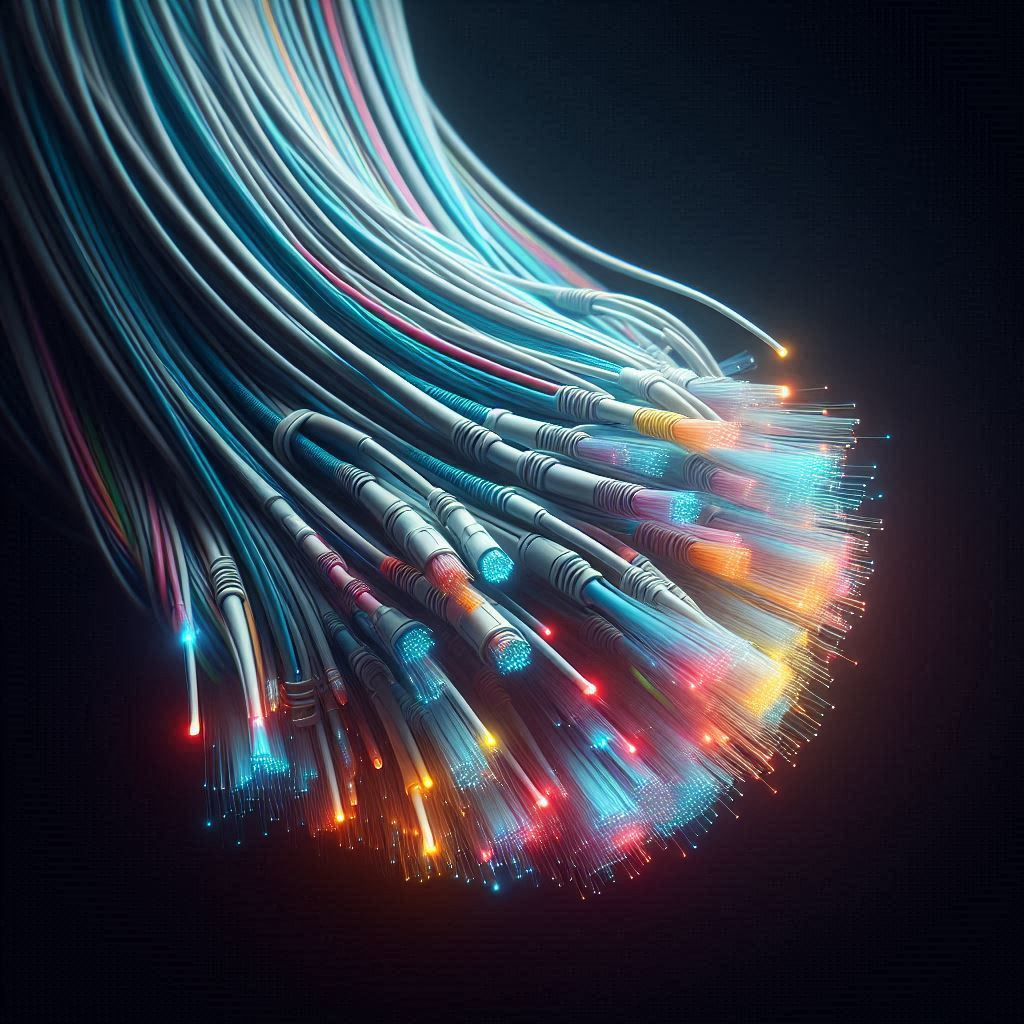
Wireless versus Cabled Internet
Using the internet via the mobile phone networks is very convenient, but it is unlikely that this service will ever completely displace cabled internet. The reason is the comparative available bandwidth or the information carrying capacity of each medium. The potential data carrying capacity of just a single fibre optic cable, of the type that may arrive at your home, vastly exceeds the entire carrying capacity of all of the wireless space that is available combined. Even then, your particular mobile phone network is only permitted to use a small fraction of the wireless space that exists and the slice they are prepared to give to you is even smaller. The mobile phone data networks only really work now because the majority of data is sent via cabled internet. If everyone switched to using exclusively the mobile phone networks there would be a complete data logjam.
The internet cable that arrives at your home is exclusively for your use but the limited wireless space must be shared between everybody in the area served. A wireless carrier can set the extent of the area served by changing the transmission power of the cellular tower. They might use one high power transmitter which serves a very large area, perhaps a 10 mile radius or more, or they might use many smaller lower power transmitters which each serve a reduced area, perhaps as little as a few hundred yards.
Where the mobile phone provider chooses to use lower power transmitters, while it may seem counter-intuitive, this provides you with better service because the are fewer other competing customers sharing the wireless space in the smaller area served and the provider can allocate more of the space to you personally. It also provides your mobile phone with improved battery life because if the mobile phone mast is nearer then your phone needs to use less battery power to reach it. The mobile carrier will however, try and use as few transmitters as is possible because each one has a large cost. Generally in rural areas, where fewer people live, there are fewer higher power transmitters and in dense urban areas there are more numerous low power transmitters.
There is a way to get a mobile transmitter for your own exclusive use. This is wi-fi. The transmission method used in wi-fi is not compatible with the mobile networks but there are many similarities in the technologies employed. Over the years the technologies have been getting ever more similar. The transmission power of wi-fi is set so that it does not extend too far beyond the boundaries of your own home (so there are few other people sharing your wireless space) and it uses a different slice of the wireless space to the mobile networks such that there is no clash. The system of everybody having their own personal mobile transmitter only really works because in most homes the wi-fi is ultimately attached to a cable that has the carrying capacity to get the data back to your provider.
Older cabled internet was not delivered using fibre optic cables but using copper cables instead. Whilst it is still possible to achieve higher performance than with wireless, copper cables do not have anywhere close to the information carrying capacity of fibre optic cables. There are many factors which limit the performance of copper cables. One problem is signal attenuation, where the signal transmitted in the cable falls off with distance. This also happens with fibre optic cables but it’s not as large of an issue and a high quality signal can be sent much further without loss. Another problem is electrical noise. There are stray electrical signals around in the environment all the time and these signals get picked up by copper cables which interferes with the information being transmitted. One source of these stray electrical signals are radio transmissions, copper cables act like aerials picking up the signals. Fibre optic cables are immune to this problem because they do not use electrical signals, they transmit information using light.
There is more than one type of copper cable. Traditional cable television providers use a higher grade of copper cable (called coaxial) than that used by landline telephone providers (twisted pair), which is cable technology invented in the 1800s and little changed since. Internet delivered by the better quality cable television copper wires can usually achieve higher speeds than that over landline telephone. Even so neither type of cable is as good as fibre optic and both providers are switching over to the latter.
Copper cables are gradually being removed from service, at least for long distance data transmission, and ultimately only fibre optic cables will remain.
